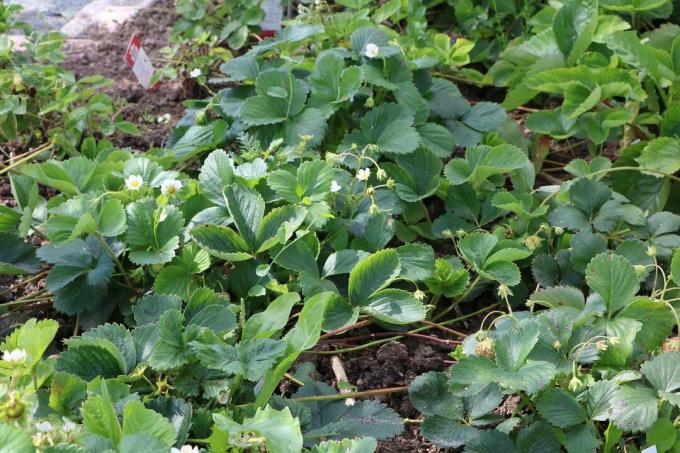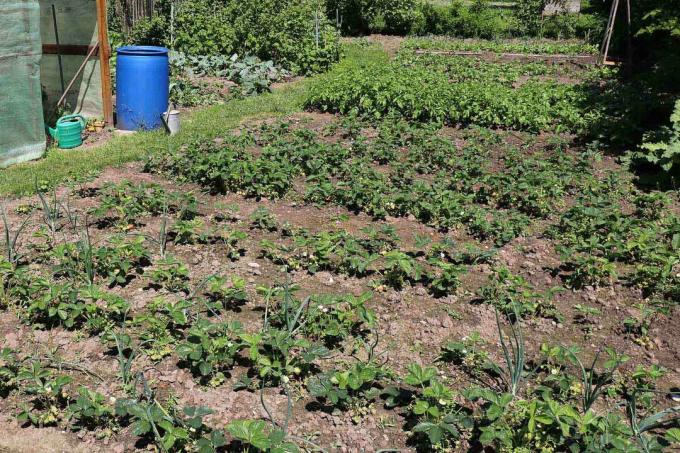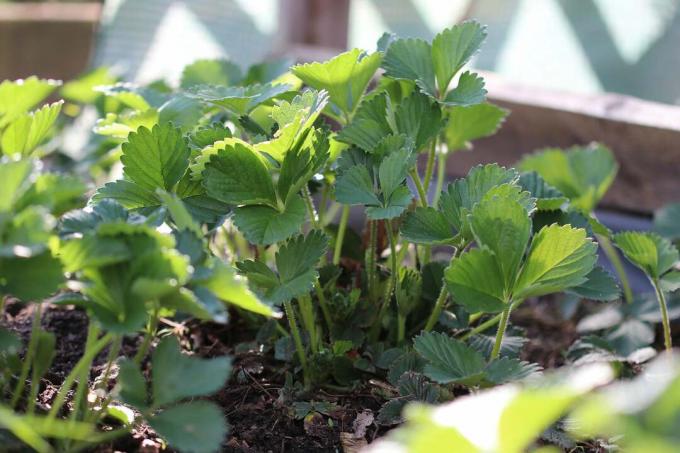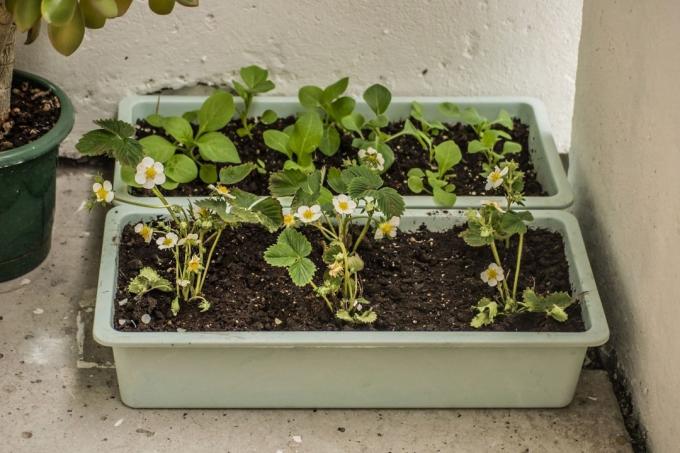
table of contents
- Pay attention to sufficient distance
- Planting distance in the garden bed
- Culture in the raised bed
- Cultivation on balcony
- frequently asked Questions
The herbaceous, perennial strawberry plants spoil you during the summer months with their red, delicious and sweet fruits. You not only need careful care, but also the distance when planting strawberries plays an important role.
In a nutshell
- Correct planting spacing makes care work easier
- prevents diseases
- Distance between rows at least 60 cm
- in the bed the distance between the plants is between 20 and 45 cm
- Spacing dependent on species
Pay attention to sufficient distance
The planting distance of strawberries (Fragaria) is particularly important for successful cultivation. It must not be too tight, but also not too wide. Both have harmful effects. Among other things, there is the possibility that if the plants are very close together after rainfall, the large leaves of the strawberries cannot dry properly. A damp environment is then created and diseases such as gray rot have an easy time.

Other disadvantages would be:
- Plants shade each other
- irregular ripening of the fruit
- Formation of fewer and smaller berries
- not a typical strawberry taste
- Poorer detection of diseases due to dense foliage
- frequent overlook of pests
On the other hand, a sufficient distance between the individual plants brings with it some advantages such as
- Facilitate maintenance work such as chopping
- prevention of Diseases and pests through better crop control
- rapid detection of above-ground spurs and removal of them
- Easier spreading of straw between rows to suppress weeds
- bilateral harvest of clean fruit
Notice: When growing syou should observe the crop rotation. Strawberries may only be replanted in the same location every four years.
Planting distance in the garden bed
There are different opinions on the planting distances of strawberries. Strawberries often have their own bed in the garden. The use of the available space is particularly important here. Cultivation usually takes place in so-called “three-row beds”:
- Row spacing 40 to 45 cm
- within the row 25 to 30 cm
- Monthly strawberries 15 cm
- Care and harvest path 60 cm

The distances between the individual strawberries can of course be due to the used sorts vary. The rule of thumb for the distance between strawberries when planting is:
- tall strawberry varieties such as "Sweet Mary": 30 to 45 cm
- short strawberry varieties such as wild strawberries: 20 to 25 cm
When growing ground-covering strawberry plants, 4 to 5 pieces are planted per square meter. You can also plant monthly strawberries as a bed border. They hardly form any spurs here and bring a rich harvest.
Notice: plant strawberry plants not too deep. The heart leaves must be above the soil surface, but not too high, otherwise they will dry out.
Culture in the raised bed
Just in raised bed the existing cultivation area must be used optimally. There is no need to pay attention to the row spacing between the individual strawberries. The care measures are clear here and no harvest route is necessary. The ideal distance between plants in the row is 25 cm. If you plan to grow with a curved soil, you can reduce the distance by 5 cm.

Cultivation on balcony
The sweet fruits can also be easily cultivated on the terrace or balcony. However, the location must also be in full sun here so that the berries are nice and sweet and tasty. Avoid shading the strawberry plants. When growing strawberries on the balcony, the following distances must be observed when planting
- normal varieties planted in rows in balcony boxes at least 20 cm
- tall strawberry varieties in window boxes 25 to 30 cm
- wild strawberries planted in window boxes 15 to 20 cm
- Hanging strawberries in hanging baskets 25 to 30 cm
- Climbing strawberries with trellis in planters 25 to 30 cm
- Put three strawberry plants in planters with a diameter and depth of 20 cm

Notice: Strawberry plants cultivated on the balcony must have Sie clean regularlyin. On the one hand, this prevents the development of fungal diseases and, on the other hand, the plant can use all its energy to produce fruit.
frequently asked Questions
The site should be in full sun and sheltered from the wind, but not dead. The soil must be loose, well aerated and permeable, and rich in humus. Well-rotted manure, peat moss or compost can be worked in to improve the soil. Furthermore, the delicious fruits prefer a neutral to slightly acidic soil with a pH between 5.5 and 6.5. Fruit or vegetable crops are well suited as a preceding crop at the site.
The best time to plant strawberries is late summer, late August to early September. No later planting should be done in autumn, as the plants still need a lot of sun to grow. If they are planted later, the roots can rot. In addition, planting in spring from April to mid-June is still possible. The harvest can then take place as early as 10 to 12 weeks after planting.
Sufficient watering is necessary in dry conditions. Weeds must be removed regularly by careful hoeing. Mulching with grass clippings is possible between the rows. At the beginning of May, however, straw is spread between these and removed again after the harvest. Only then does fertilization take place.
Yes. Strawberries can easily be grown with other vegetables such as leeks or French beans. However, it is important to ensure that the strawberry plants are not overshadowed by their neighbors. An individual definition of the planting distances to each other should be made here. There must be enough space for care and harvest.



